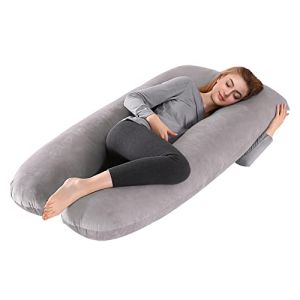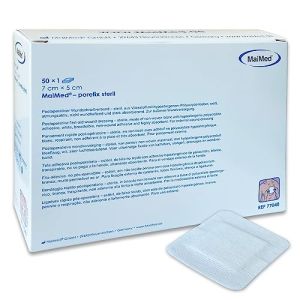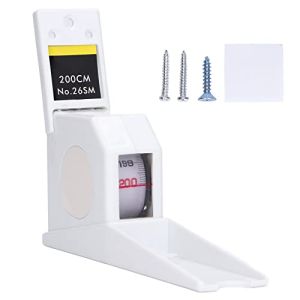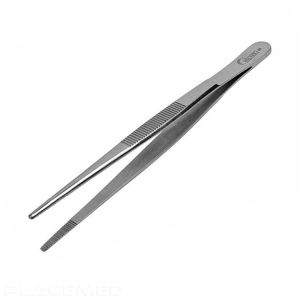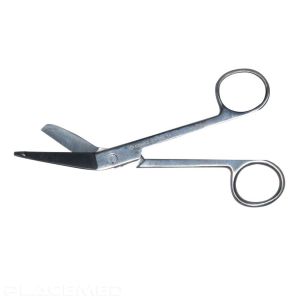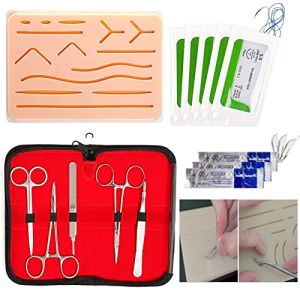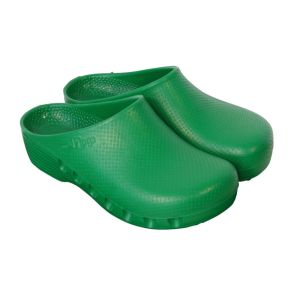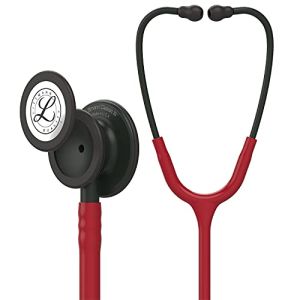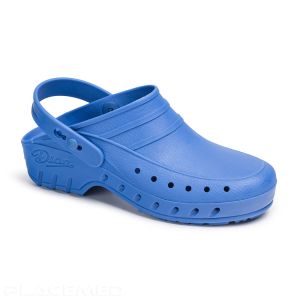How to Choose the Right Medical Stethoscope
The stethoscope is more than just a tool for healthcare professionals; it's a symbol of their profession. Whether you're a medical student, nurse, or experienced doctor, having the stethoscope that suits your needs is essential. With the variety of models available, it's not always easy to make the right choice. How can you be sure you're choosing correctly? This article will help you see things more clearly.

1. What Is a Stethoscope?
A stethoscope is a medical instrument that allows you to listen to sounds produced inside the human body. These sounds come from the heart, lungs, intestines, or arteries. By placing the stethoscope's chest piece on the patient's body, the healthcare professional can hear these noises and detect any anomalies. It is an indispensable tool for diagnosing and monitoring patients.
2. The History of the Stethoscope
The first stethoscope was invented in 1816 by French physician René Laennec. One day, unable to examine a patient by placing his ear on her chest, he rolled up a piece of paper into a tube to listen to her heartbeat. This rudimentary device gave birth to the first stethoscope, then called a "cylinder." Later, the stethoscope was improved with materials like wood and then metal.
In the mid-19th century, the monaural stethoscope (for one ear) evolved into a binaural model (for both ears), offering better listening quality. In the 1960s, Dr. David Littmann, a cardiologist and professor at Harvard University, made significant improvements by creating a lightweight stethoscope with excellent acoustics. Today's modern stethoscopes are the result of these many innovations.
3. Why Choosing the Right Stethoscope Is Important
A quality stethoscope is essential for several reasons. First, it allows you to hear the body's sounds clearly, which is crucial for detecting health problems. A poor-quality stethoscope can make listening difficult, potentially leading to diagnostic errors. Secondly, a comfortable stethoscope is important for the healthcare professional who uses it multiple times a day. An ergonomic device reduces fatigue and makes work more pleasant.
Moreover, choosing a stethoscope suited to your specialty optimizes examinations. For example, a cardiologist will need a highly sensitive stethoscope to detect heart murmurs, while a pediatrician will prefer a model adapted to children's size. Finally, a good-quality stethoscope is a durable investment that can be used for many years.
4. The Different Types of Stethoscopes
There are several types of stethoscopes on the market, each designed for specific uses. Here is a description of the main types:
- Acoustic Stethoscopes: These are traditional models without electronics. They transmit the body's sounds directly to the practitioner's ears. They are reliable and do not require batteries.
- Electronic Stethoscopes: They amplify sounds using an electronic system, which can be useful in noisy environments or for hearing faint sounds. Some models can filter out background noise.
- Fetal Stethoscopes: Specifically designed to listen to the fetus's heart during pregnancy. They have a larger chest piece to capture sounds through the mother's abdomen.
- Pediatric and Neonatal Stethoscopes: Adapted for children and newborns, with a smaller chest piece for better precision.
- Cardiology Stethoscopes: Offer superior acoustic quality to detect the most subtle heart sounds.
5. Elements to Consider When Choosing a Stethoscope
Several factors should be taken into account to choose the stethoscope that will suit you best.
5.1 The Headset
The headset consists of the ear tubes and the eartips that fit into the ears. The eartips should be comfortable and well-suited to your ears to ensure good sound insulation. There are soft silicone eartips and hard plastic ones. Soft eartips are generally more comfortable and offer better sound isolation.
The ear tubes should be angled forward, toward the ear canal. An adjustable headset allows you to adapt the spacing of the tubes for better comfort. Some stethoscopes offer the possibility to change the eartips to suit different users.
5.2 The Chest Piece
The chest piece is the part placed on the patient's body. It can be single or dual-sided. A dual chest piece has one side with a diaphragm and the other with a bell. The diaphragm is used to listen to high-frequency sounds like lung sounds, while the bell is used for low-frequency sounds like certain heart murmurs.
The material of the chest piece influences sound quality. Stainless steel chest pieces offer better sound transmission than aluminum ones. The diameter of the chest piece is also important: a larger diameter captures more sounds, while a smaller diameter is useful for hard-to-reach areas or smaller patients.
5.3 The Tubing
The tubing is the hose that connects the chest piece to the headset. It should be long enough to allow a comfortable distance between the professional and the patient, generally between 22 and 30 inches (55 to 75 cm). Longer tubing offers more comfort but may slightly reduce sound quality.
The tubing should be thick and flexible to reduce ambient noise and prevent cracking over time. Latex-free materials are preferable to avoid allergies. Some tubing has dual lumen, which improves sound transmission to each ear.
5.4 Accessories and Options
Some stethoscopes offer additional accessories like replacement eartips, interchangeable chest pieces, or electronic features. These options can increase the price but offer greater flexibility of use.
6. Tips for Choosing Your Stethoscope
Here are some tips to help you make the right choice:
- Assess Your Professional Needs: Depending on your specialty, your requirements will differ. A general practitioner may be satisfied with a standard acoustic stethoscope, while a cardiologist may need a more sophisticated model.
- Consider Your Budget: Stethoscope prices vary greatly. Set a budget based on your needs and frequency of use.
- Think About Comfort: A lightweight and ergonomic stethoscope will be more pleasant to use, especially if you wear it around your neck all day.
- Check the Warranty: Quality stethoscopes are often guaranteed for several years. This is a sign of durability.
- Read Reviews: Consult feedback from other professionals to know the strengths and weaknesses of different models.
7. Maintaining Your Stethoscope
To extend the life of your stethoscope and ensure optimal hygiene, it's important to maintain it regularly:
- Clean the chest piece and eartips with a soft cloth and isopropyl alcohol.
- Avoid exposing the tubing to extreme temperatures or solvents that could damage it.
- Replace the eartips if they are worn or dirty.
- Store your stethoscope in a dry place away from direct sunlight.
8. Where to Buy Your Stethoscope
The Placemed marketplace is a platform dedicated to healthcare professionals, offering a wide range of stethoscopes from different brands and models. You'll find detailed information on each product, user reviews, and advice to help you choose. Plus, you can compare prices and benefit from interesting promotions.
9. Mistakes to Avoid When Choosing a Stethoscope
To avoid regretting your purchase, here are some common mistakes to avoid:
- Focusing Only on Price: A cheap stethoscope may be tempting but might not offer the necessary sound quality. Investing in a quality model is often more cost-effective in the long run.
- Neglecting Comfort: An uncomfortable stethoscope can make your work difficult. Ensure that the headset and eartips fit your ears.
- Forgetting Hygiene: Choose a stethoscope that's easy to clean and, if possible, opt for antibacterial materials.
- Not Considering Your Specialty: A universal stethoscope may not be sufficient for certain specialties. Make sure the chosen model suits your specific needs.
- Ignoring Reviews and Recommendations: Other professionals' experiences can help you avoid unpleasant surprises.
10. Innovations in Stethoscopes
Technology is evolving, and stethoscopes are no exception. Here are some recent innovations:
- Connected Stethoscopes: Some models can connect to a smartphone or tablet to record sounds and analyze them with dedicated apps.
- Wireless Stethoscopes: Wireless models allow greater freedom of movement and can transmit sounds remotely.
- Artificial Intelligence: Sound analysis software can help detect anomalies by interpreting recorded sounds.
These innovations offer new possibilities for diagnosing and monitoring patients but come at a higher cost. It's important to weigh the pros and cons before investing in these technologies.
11. Conclusion
The stethoscope is an essential tool for any healthcare professional. By taking the time to choose it well, you ensure you have a reliable, comfortable instrument suited to your practice. Remember that the quality of your stethoscope can have a direct impact on the quality of care you provide to your patients. So, consider the key elements presented in this article and make the choice that best suits you.
 Francais
Francais 


